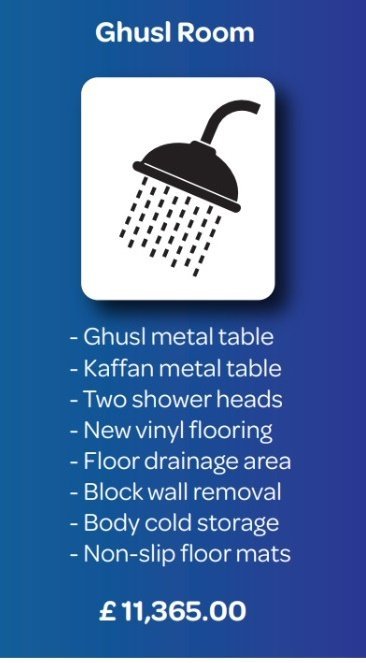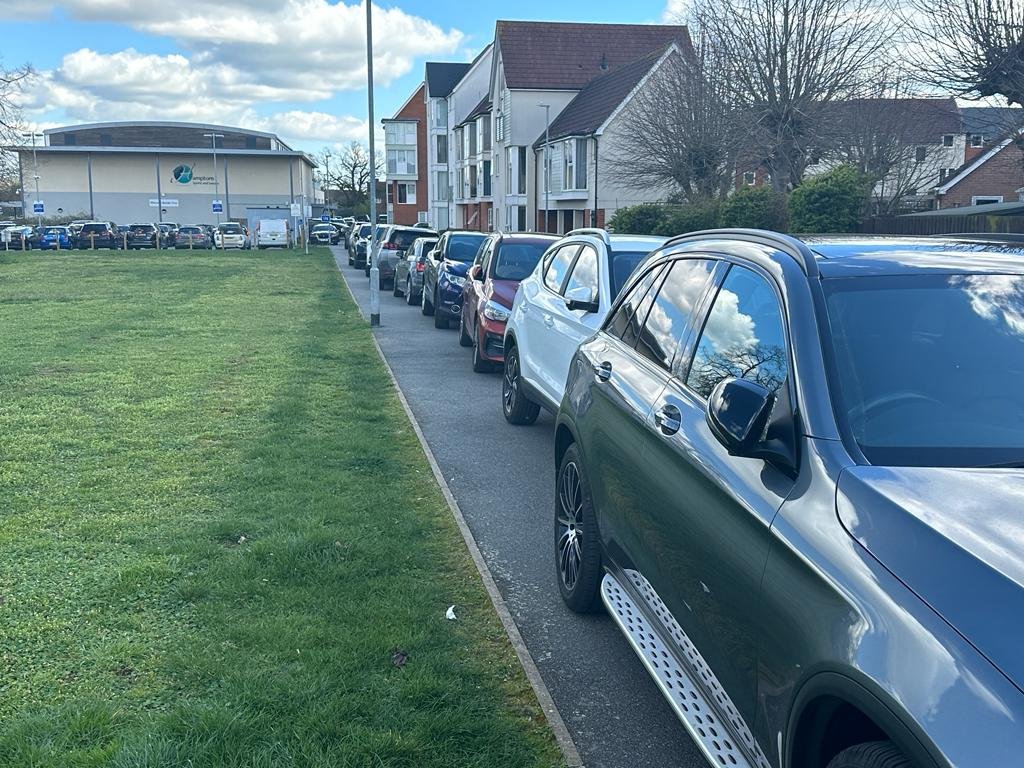The Wrong Place For A Mosque
In this article, we take a look at the suitability of Hamptons Sports and Leisure club as a location for a large mosque.
”You Wouldn’t Be doing this if it was a church !”
The favourite put down line used by the Lib Dem Councillors, and our local MP. In planning terms they are correct, there are considerations and issues that are unique to places of worship used by the Islamic faith, namely mosques or masjids.
The Islamic faith have a unique pattern of worship, linked to the rising and setting of the sun, and the lunar cycle.
During the summer months dawn prayers can be as early as 3.30am, and the latest prayers can be after 11pm. This does mean that there will be cars arriving and exiting Hamptons at very unsocial hours, and given the proximity of residential properties to the car parks and Tydeman’s (the main route in and out), increased noise and disturbance is unavoidable.
Adding funeral services to Hamptons, would take the venue into 24 hour use, as funeral prayers and body preparation take place as soon after death as possible. It would involve relatives and volunteers arriving at all hours throughout the night.
Refused by the city council in 2022, but still part of CMS long term plans for the Hamptons Mosque.
A Statutory Nuisance ?
Given the quietness of the area at night, and the lack of background noise around the site, any sounds generated by cars arriving and departing (and car doors opening and closing) will seem much louder. In fact any increase in noise of 10 decibels (dB) above background noise levels, would disturb your sleep.
Council’s now have powers to deal with disturbance from Night Time Noise between the hours of 11pm-7am. Hamptons has no planning permission allowing the operation of the venue for worship out of hours, nor do they hold the relveant premises licence permitting it either.
5.15am on 26.03.23. One of over 20 cars that arrived in a 10 minute period.
Statutory Nuisance is defined by Part Three of the 1990 Environmental Protection Act. An Environmental Health officer would decide whether a particular complaint meets the definition of a Statutory Nuisance. There is no maximum noise level set in law.
For the noise to count as a statutory nuisance it must do one of the following:
unreasonably and substantially interfere with the use or enjoyment of a home or other premises
injure health or be likely to injure health
The table below shows recorded noise levels from car arrivals and departures from a car park environment
Location,location,location
Places of worship work best in locations which are easily accessible by walking and cycling and benefit from good public transport links. The Parkway mosque in Moulsham St, and the Ali Reza mosque in Regina Rd are good examples.
Good public transport links will help to reduce the number of car journeys. This is better for the environment and helps to deliver the council’s sustainable development targets, as well as help minimise the impacts associated with car parking and traffic, such as increased noise and congestion
With this in mind it’s preferable to locate places of worship away from residential areas if at all possible.
Everyone will arrive by bus or walk
In this case there is no night time bus service, and most days there’s no service before 5.55am to travel to early prayers.
Likewise for late prayers, with very little service to and from the Hamptons after 9.30pm. This graphic shows that you can’t make early prayers by bus, and getting home after last prayers is very tight.
Bus services at prayer times to and from Hamptons, we’ve used the Parkway mosque as a point of reference.
Using Census information, we calculate that very few members of the Muslim community live close enough to walk to the Hamptons mosque (using 0.6 mile as the maximum walking distance).
The main mode of transport to attend the Hamptons mosque continues to be by private vehicle, Our observations during Ramadan 2023, show that 97% of everyone we observed drove to the mosque.
Having lost the overflow parking on the Tydemans green and with new restrictions to parking around the Clarion Gate development, the club car park is quite inadequate for mosque parking.
Good Friday 2023, showing worshippers illegally obstructing the pavement.
Using the Main Hall and Members Bar/Dance Studio, we’ve calculated that the venue could hold 800+ worshippers in a single session, bringing at least 496 cars to the venue in one concentrated wave (based on the national travel mode figures for car use).
The Essex County Council Parking Standards for places of worship are quite clear, the Hamptons mosque would need in excess of 220 spaces, over 122 spaces more than it has now. In effect the car park would need to more than double in size.
Hamptons is 2,200 m2 = 220 parking spaces.
It’s vital that the level of car parking required for a place of worship is sufficient to cover the potential maximum number of worshippers that the venue holds. .
In fact even as a “sports and leisure club” it was a little under provisioned when the full planning permission for the club was granted in 2008, and was 22 spaces short of Essex County Council Parking Standard.
There is a small amount of street parking available locally, but the impact of worshippers driving round and round looking for a space (possibly at 3am), will generate unacceptable extra noise and disturbance to the residential amenity.
In terms of traffic and trip generation, there is a huge difference between different kinds of places of worship. The next graphic was produced by the Highways department of a council in Nottinghamshire
A table comparing the number of trips generated by religious buildings.
Going Forward
The Chelmsford Muslim Society have made it clear that they do not intend to submit a planning application for a place of worship at Hamptons, choosing to continue to benefit from informal decisions from Chelmsford City Council, and bypassing the planning system.
There would be significant barriers to submitting a planning application that would stand any chance of being approved. The proximity to residential properties, inadequate parking onsite, poor transport links and increased noise and disturbance, would be key points that would ultimately lead to its refusal by the Planning Committee.







